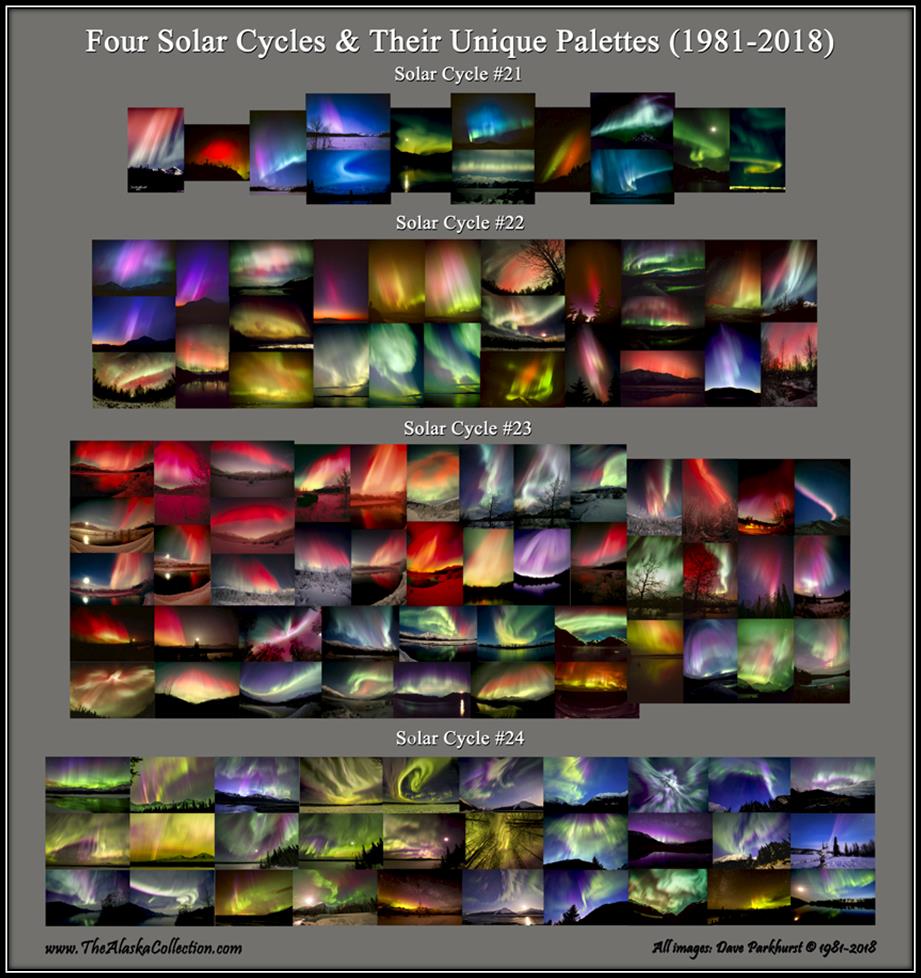
Aurora Color Palettes
This illustration shows 38 years of auroral color variations per solar cycle with my physical observations and photography in the field, covering a 600- by 600-mile triangle across Alaska. The intensities, colors, and shapes of auroral displays are directly related to each solar cycle’s output.
Theories about every blast of solar wind having different "signatures of effect" have been discussed with scientists worldwide over the years. The comparisons above show the decline of Cycle #21, one of the largest on record, when on any clear to partly cloudy night aurora displays were vivid and powerful. Even when cloudy, the clouds were backlit with the colors of auroral displays above them.
The photographer began photographing aurora during the waning years of that energetic cycle. Cycles #22 and #23, (1989 and 2001 Solar Maximums) though not as large geomagnetically as Cycle #21, had several of the largest X-class solar flares and auroral displays on record. By comparison, recent Cycle #24 was exceptionally weak, though there were a handful of beautiful auroral displays across the world. What has been quite unusual about Cycle #24 is the prevalent amount of purple auroral displays occurring within the cycle.
This only adds to the “signatures of effect” theory whereas actual entire solar cycles may carry unique signatures in themselves. The coming solar-storm output of our massive star and subsequent auroral events above Earth for Solar Cycle #25 are absolutely unpredictable.
At a scientific forum in the mid-1980s given by the prestigious director of the Geophysical Institute/Fairbanks, Professor Syun-Ichi Akasofu (Retired), he offered a synopsis. He summed up the unknowns of all solar cycles and our Sun-Earth connection perfectly by stating "… Our sun will do whatever it wants to do, whenever it wants to do it…”!
All images © Dave Parkhurst www.TheAlaskaCollection.com



